If you’re up for a mix of adventure and spiritual vibes, the Tungnath trek in Uttarakhand’s Himalayas is the perfect journey.
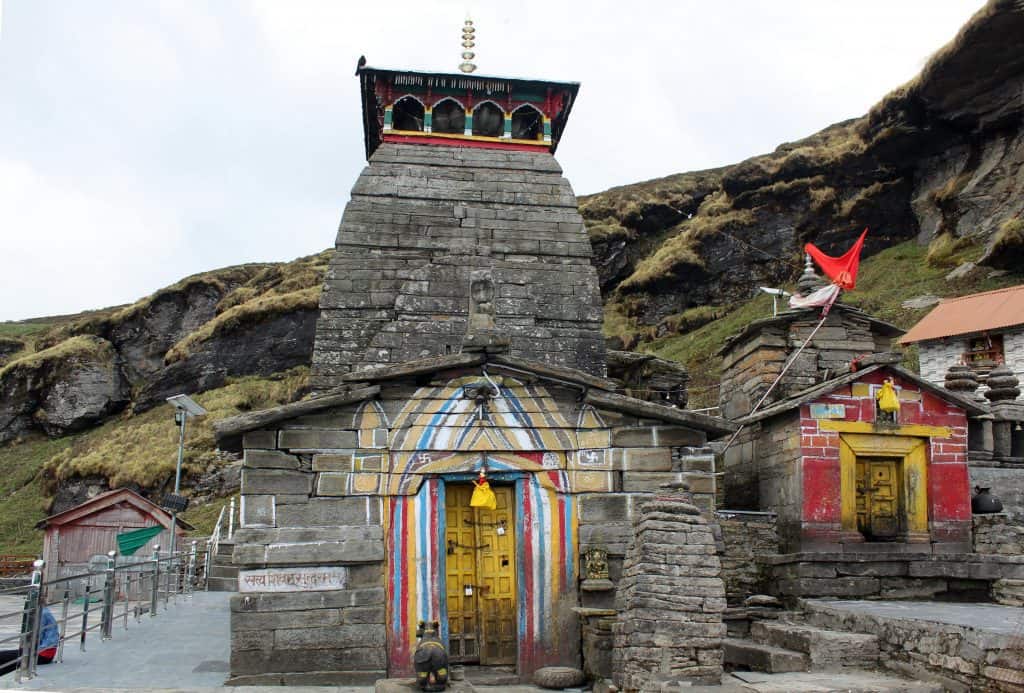
Looking for an adventure that’s equal parts thrill and tranquillity? The Tungnath trek in Uttarakhand offers just that, with stunning landscapes and a touch of spiritual charm. This trek, known for attracting both nature lovers and devotees, takes you to the Tungnath Temple, the highest Shiva temple in the world, perched at an impressive altitude of 3,680 meters (12,073 feet). It’s not just a religious site, but also a fantastic spot for those looking to soak in the beauty of the mountains.
The adventure begins in the charming village of Chopta, often called the ‘Mini Switzerland of India.’ From there, the trail leads you through stunning landscapes filled with lush green meadows, dense forests, and incredible views of towering peaks like Nanda Devi and Chaukhamba. The trek is relatively short—about 4 kilometres (2.5 miles) to Tungnath—but it packs in all the exploration and scenic beauty you could ask for.
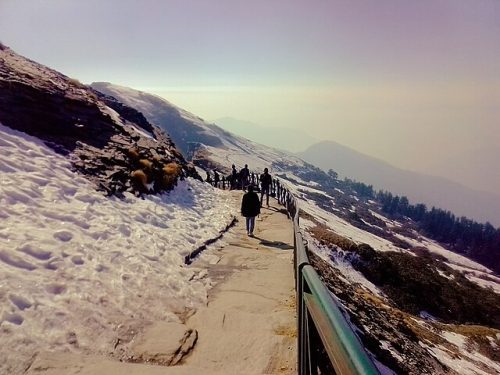
As you walk, you’ll find yourself surrounded by rich biodiversity, with rhododendron trees, alpine flowers, and a variety of birds adding colour to the experience. The clear, crisp air and the majestic views of the snow-capped mountains make every step feel rewarding. And just when you think it can’t get better, you’ll reach the temple, where the serenity of the place and the spiritual energy is overwhelming.
For those who want a bit more adventure, a short, steep climb from Tungnath takes you to Chandrashila, a summit that offers 360-degree views of the Himalayas. Whether you’re here for the trek, the spiritual significance, or simply to be among the mountains, the trek promises an unforgettable experience that will stay with you long after you’ve returned home.
The majestic Tungnath Temple
The sacred Tungnath Temple is a stunning example of ancient North Indian temple architecture, perched at a remarkable altitude of 3,680 meters (12,073 feet), making it the highest Shiva temple in the world. The temple is small yet intricately designed, built from stone, and set against the dramatic backdrop of the towering Himalayas. The modest size of the temple contrasts with its immense spiritual significance, creating an atmosphere of serenity and reverence.
The temple’s entrance features an ornate stone doorway, leading to a sanctum that houses the deity of Lord Shiva in the form of a Shiva Lingam. The structure is adorned with delicate carvings, depicting various deities and symbols from Hindu mythology, lending a sacred and ancient feel to the site. Despite its simple design, the temple’s surroundings, with panoramic views of snow-covered peaks and lush green meadows, give it an awe-inspiring presence.
The temple’s mystical charm, with the sound of bells and mantras resonating in the crisp, cold air during the daily aartis is memorable. In the colder months, the temple is often encased in snow, giving it an almost ethereal beauty. Despite its remote location and the often harsh weather conditions, Tungnath Temple remains a popular pilgrimage destination, attracting both spiritual seekers and nature lovers who come to experience its peace, beauty, and divine atmosphere.
Know the History behind Tungnath
Tungnath is one of the few sacred sites where three great figures from ancient epics—the Pandavas, Lord Rama, and Ravana—are intricately connected through powerful stories. As part of the Panch Kedar, Tungnath Temple holds deep spiritual significance, especially in the Mahabharata.
After the Kurukshetra war, the Pandavas, burdened by guilt for killing their cousins, sought forgiveness from Lord Shiva. However, Lord Shiva, displeased with their actions, disguised himself as a bull and hid in Guptakashi. The determined Pandavas eventually discovered him, but Shiva’s body reappeared in five different places: his hands at Tungnath, his hump at Kedarnath, and other parts at Rudranath, Madhyamaheshwar, and Kalpeshwar. In honour of this divine manifestation, the Pandavas built temples at each of these locations, now revered as the Panch Kedar.
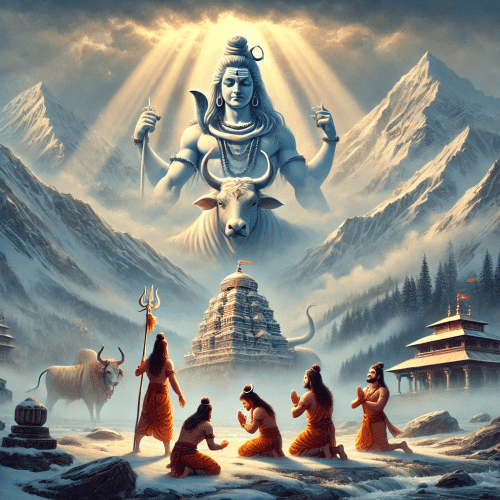
Tungnath’s sacred connection extends beyond the Mahabharata. According to another legend, Lord Rama meditated at Chandrashila, a peak near Tungnath, seeking peace and atonement after his victory over Ravana in the Ramayana. This spiritual link to Lord Rama adds further depth to the temple’s significance.
Moreover, Tungnath is tied to Ravana, the central antagonist of the Ramayana. It is believed that Ravana, a devoted worshiper of Lord Shiva, performed penance at Tungnath to seek Shiva’s blessings and strength. This intricate intertwining of stories from both the Mahabharata and Ramayana, involving the Pandavas, Lord Rama, and Ravana, makes Tungnath a place of profound spiritual importance, drawing pilgrims seeking blessings, forgiveness, and divine connection.
Route to Divinity:
The journey from Haridwar to Tungnath takes you through the captivating Garhwal Himalayas, offering a blend of spirituality and natural beauty. Tungnath, standing at 3,680 meters (12073 feet), is the highest Shiva temple in the world.
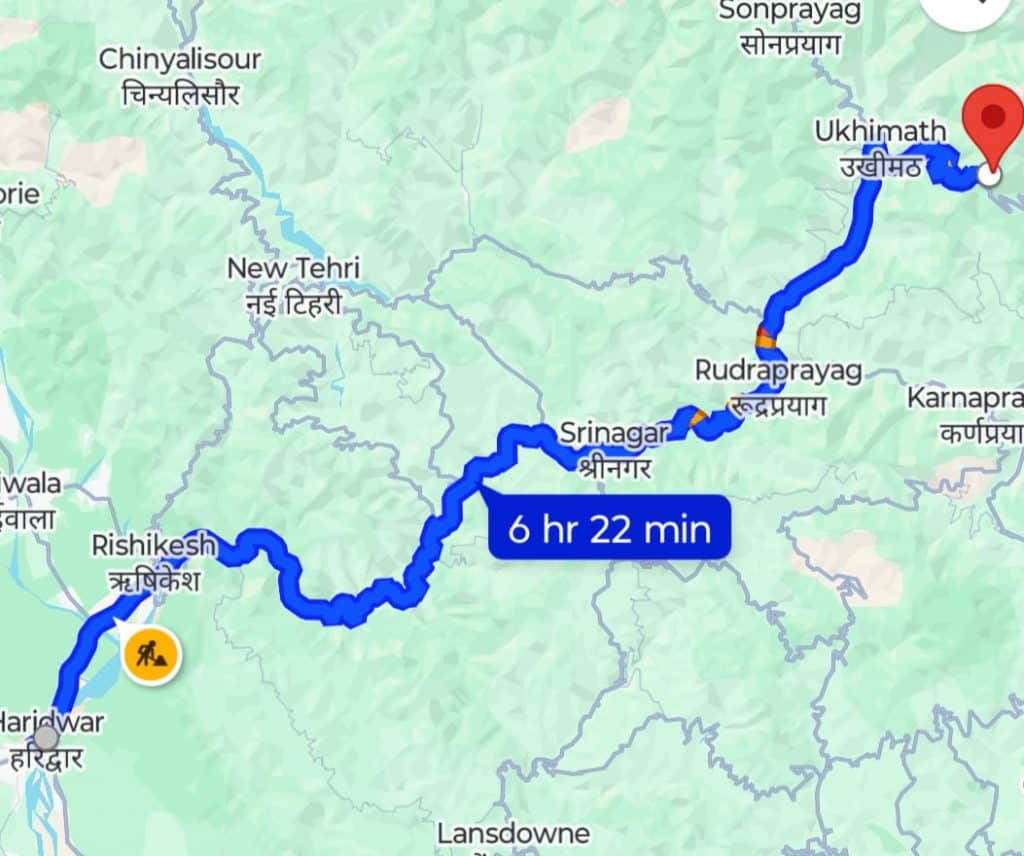
Starting from Haridwar, the first stop is Rishikesh, a spiritual hub known for its iconic Lakshman Jhula and the peaceful Triveni Ghat on the banks of the Ganges. From Rishikesh, the route takes you to Devprayag, where the Alaknanda and Bhagirathi rivers merge to form the Ganges. Devprayag’s confluence is considered sacred, and the Raghunath Temple is a key highlight.
Moving further, Srinagar in Uttarakhand is a serene stopover, offering a peaceful break before heading deeper into the mountains. The journey continues to Rudraprayag, where the Mandakini and Alaknanda rivers meet. This town holds religious importance, with temples like Rudranath and Koteshwar drawing visitors. The next stop, Ukhimath, is where the deities of Kedarnath are worshipped during winter. The Omkareshwar Temple and stunning views of Himalayan peaks are the key attractions here.
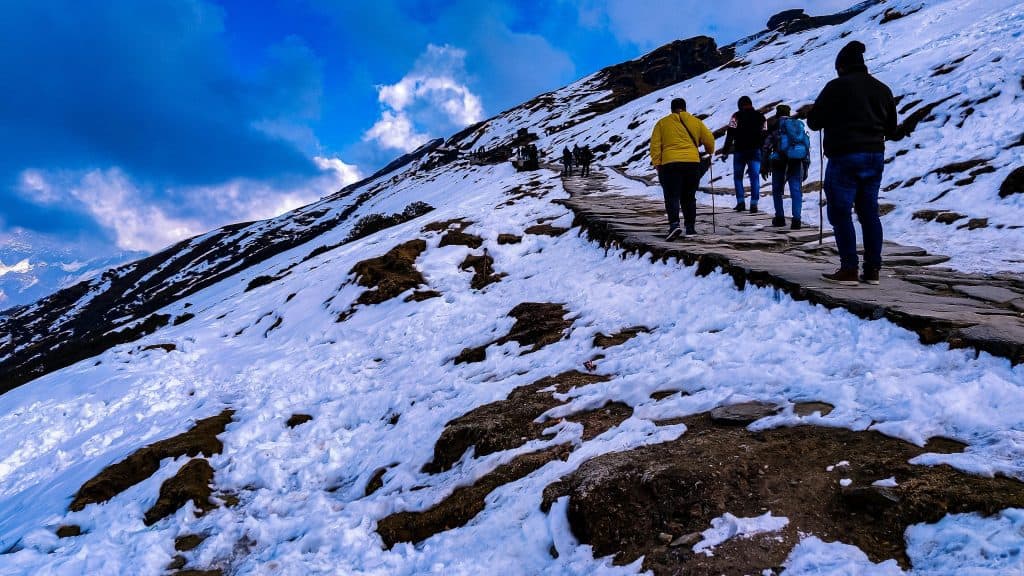
From Ukhimath, a short drive leads to Chopta, a picturesque hill station often referred to as “Mini Switzerland.” Surrounded by lush meadows and dense forests, Chopta is the base for the trek to Tungnath.
The 3.5 km trek offers breathtaking views of rhododendron forests and the majestic Himalayan ranges. Tungnath Temple, perched at a high altitude, exudes a serene, spiritual atmosphere.
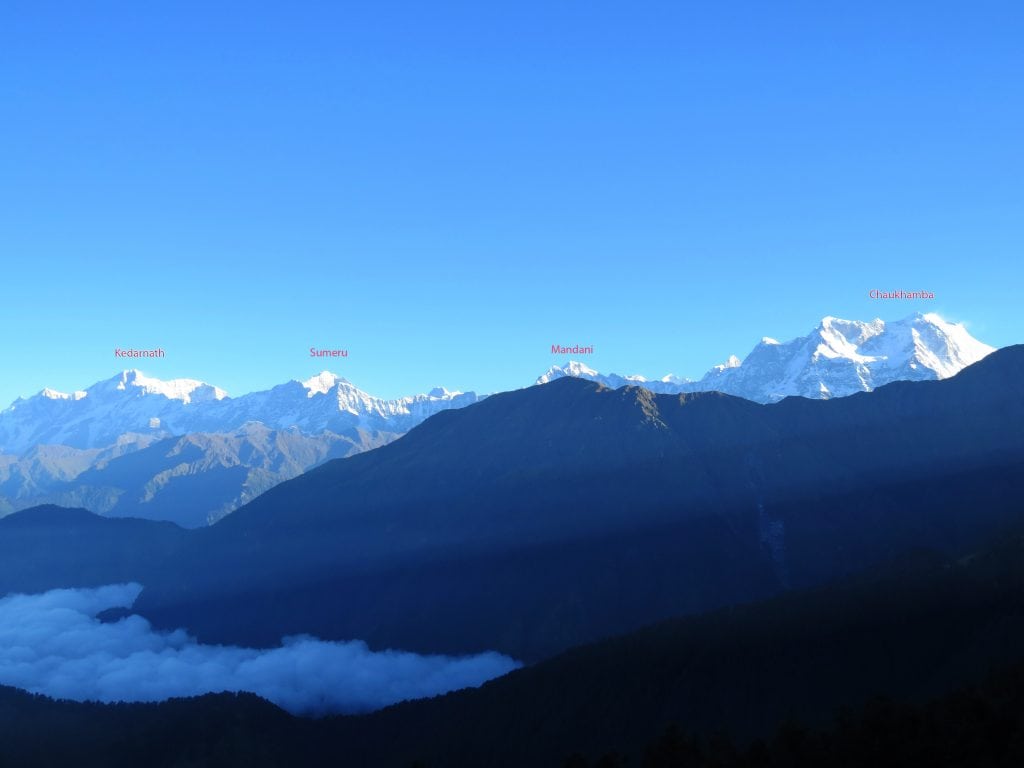
For those seeking more adventure, the trek can extend to Chandrashila Peak, 1.5 km above Tungnath, providing panoramic views of peaks like Nanda Devi, Chaukhamba, and Trishul, particularly stunning at sunrise or sunset.
Route overview:
- Haridwar to Rishikesh (20 km, 45 mins): Spiritual town known for Lakshman Jhula and Triveni Ghat along the Ganges.
- Rishikesh to Devprayag (75 km, 2–3 hours): Confluence of Alaknanda and Bhagirathi rivers, forming the Ganges; visit the sacred Raghunath Temple.
- Devprayag to Srinagar (35 km, 1 hour): A peaceful town and educational hub, ideal for a short rest stop.
- Srinagar to Rudraprayag (33 km, 1 hour): Famous for the confluence of Mandakini and Alaknanda rivers; home to Rudranath and Koteshwar temples.
- Rudraprayag to Ukhimath (42 km, 1.5–2 hours): Religious town where Kedarnath deities are worshipped in winter; notable for Omkareshwar Temple and Himalayan views.
- Ukhimath to Chopta (29 km, 1.5 hours): The “Mini Switzerland” of India, is the base for the trek with panoramic Himalayan views.
- Chopta to Tungnath (3.5 km, 2–3 hours): Moderate trek through rhododendron forests to the revered Tungnath Shiva temple.
- Chandrashila Peak (Optional) (1.5 km, 45 mins): A steep climb from Tungnath offers 360-degree views of the Himalayas, especially stunning at sunrise or sunset.
The best time to undertake this journey is between April to June or September to November, with pleasant weather and clear skies. The trek requires moderate fitness and proper preparation, ensuring a rewarding experience in both natural and spiritual aspects.
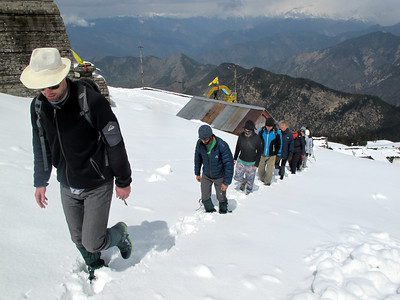
The trek through serene forests and meadows offers both adventure and tranquillity, while the optional climb to Chandrashila Peak rewards you with breathtaking panoramic vistas. This trek is an unforgettable experience that leaves a lasting imprint on your heart and soul.
FAQs for Tungnath Trek
- How long is the Tungnath trek?
The trek is approximately 4 km (2.5 miles) and typically takes around 3-4 hours to complete, depending on your pace. - Where does the Tungnath trek start?
The trek usually begins from the village of Chopta, also known as the “Mini Switzerland of India,” located in the Kedarnath Wildlife Sanctuary. - How do I reach Chopta?
Chopta is accessible by road from major cities like Rishikesh, Haridwar, and Dehradun. The nearest airport is Jolly Grant Airport in Dehradun, and the nearest railway station is Rishikesh. You can hire a taxi or take a bus from these locations to begin the Tungnath trek from Chopta. - What is the best time to do the Tungnath trek?
The best time to undertake the trek is between April to June or September to November. During these months, the weather is pleasant, and the trail is accessible. The temple is closed in winter due to heavy snowfall. - Is the Tungnath trek difficult?
The trek is considered an easy to moderate trek, suitable for beginners and experienced trekkers alike. The well-paved path makes it accessible, but the steep ascent can be challenging for some. - What is the altitude of the Tungnath Temple?
Tungnath Temple stands at an altitude of 3,680 meters (12,073 feet), making it the highest Shiva temple in the world. - Are there accommodations available near Tungnath?
Yes, there are basic accommodations available in Chopta, including guesthouses, campsites, and lodges. For those trekking to Chandrashila, some people prefer to camp along the trail for a more immersive experience. - Can I visit Tungnath during winter?
The Tungnath Temple remains closed during winter due to heavy snowfall, but you can still trek to the Tungnath site and Chandrashila, though the trail will be more challenging. - Is the Chandrashila summit part of the Tungnath trek?
Yes, Chandrashila is a popular extension of the trek. It is a further 1.5 km (0.9 miles) from Tungnath and offers panoramic 360-degree views of the Himalayan peaks. - What should I carry for the Tungnath trek?
Basic trekking gear, including sturdy shoes, warm clothing (as temperatures drop at high altitudes), a water bottle, snacks, sunscreen, and a first aid kit. - Are there any restrictions or permits required for the Tungnath trek?
No permits are required for the Tungnath trek, but if you plan to extend the trek to Chandrashila or stay overnight, you should check with local authorities or guides for any updates on regulations.
Read more: Latest



